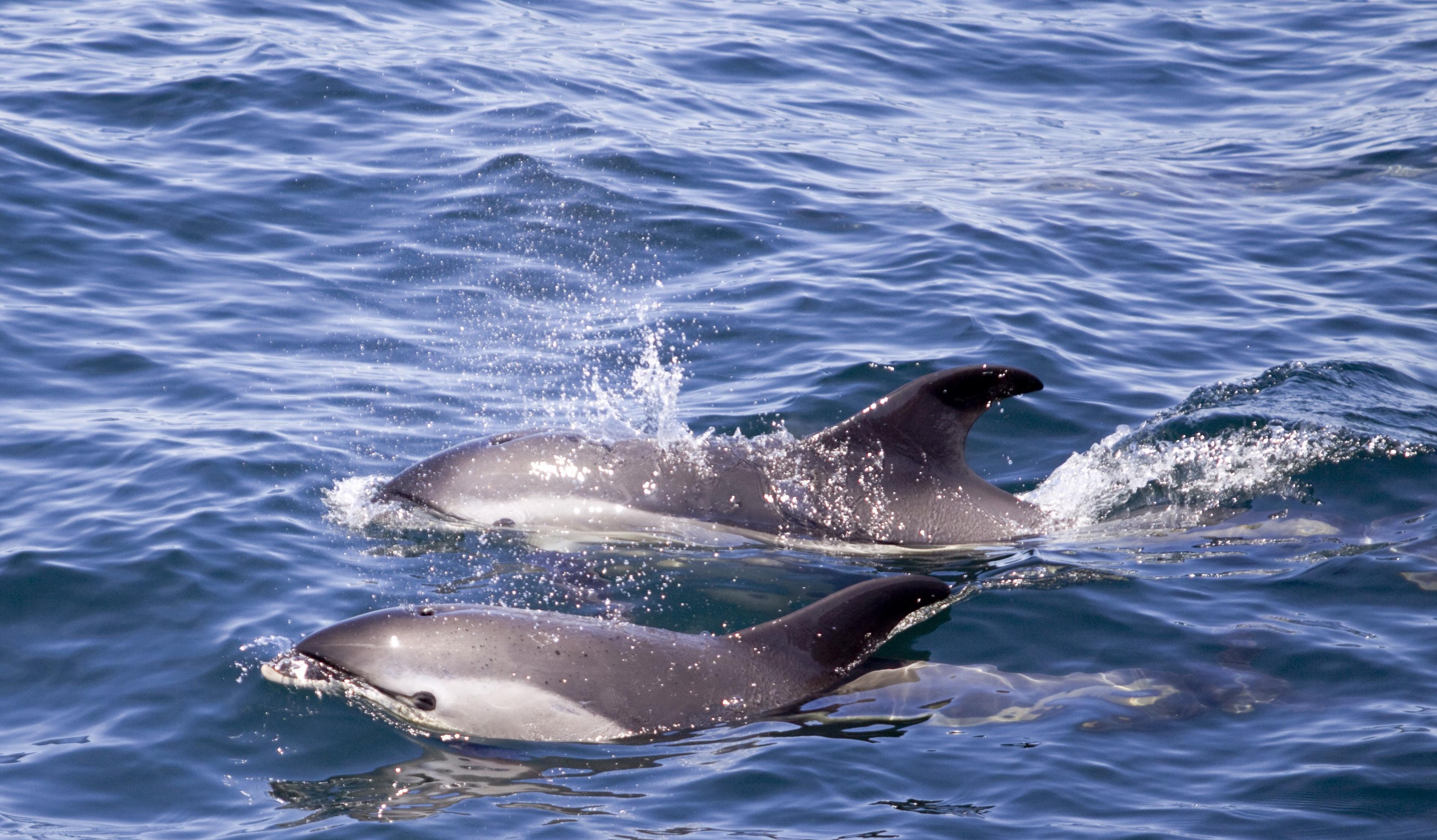Scientists listen in to protect elusive dolphins
- Published
The Atlantic white sided dolphin prefers the deep ocean to coastal waters and is rarely seen by humans
Marine scientists are listening in to the secret world of an elusive species of dolphin, by examining their unique sounds in an attempt to better protect them.
The Atlantic white sided dolphin prefers the deep ocean to coastal waters and is rarely seen by humans.
The species is so poorly understood in science that there are no accurate estimates on population size, even though it is hunted in the Faroe Islands.
In fact, with climate change, mass stranding, hunting and being vulnerable to becoming fishing "by-catch", it is difficult for experts to have a definitive view on whether their population size is healthy or not.
This is what has drawn scientists from the Scottish Association for Marine Science (SAMS) to study the Atlantic white sided dolphin in more depth, by listening to them.
High frequency sound
Like other dolphins, they make echolocation clicks, a high frequency pulse of sound.
And the time it takes for that sound to come back to them tells them how far away their target is - so they use this for finding food, for navigation and for orientation.

Their whistling is thought to be used more for social behaviour.
Under the sea off Scotland various research groups have moored a number of underwater microphones, known as hydrophones, to record the noises of marine creatures.
Traditionally, to make any sense of this data, a person with expert ears might listen across the recordings.
Doing so, they can then filter out particular species by their noises and build up a picture of what creatures and how many of them are in a particular area.
But it is a time-intensive process.
So, to speed things up technology is now helping.
Research projects
Computer systems are being trained to detect the different and unique noises of marine creatures.
Such systems "learn" what a certain species sounds like so they can do the filtering of long-term recordings, which in turn builds up a picture of the species, its population size and its distribution.
But to "learn", the technology needs to be told what to look out for.
Cue this new research project in Scotland.
Because so far, humans, let alone computers, know very little about the Atlantic white sided dolphin's acoustic repertoire - basically the set of sounds that a certain species makes.
The scientists have assembled recordings of them from various sources from the eastern and western North Atlantic, which they are now studying.
By doing so they can start to build a blueprint, which can be used to train the computer systems to detect their noises automatically in these long-term underwater recordings.
And doing so is crucial to gather a better idea of the population and distribution of these secretive cetaceans.
Intriguing, yes, but also significant because of the bigger picture.
'Climate change indicators'
Susannah Calderan, a research fellow at SAMS, and a leading marine mammal scientist on this study, says a species such as the Atlantic white sided dolphin needs to be looked after in their own right because they're part of the ecosystem, but they're important to watch as indicators of how the ecosystem is doing as a whole too.
"In terms of climate change, it's very useful," she says.
"Because the defining thing that controls whale and dolphin movements is they move around to where their food is.
"And if their food is changing in its distribution - because it is more sensitive to water temperature - they will change in their distribution as well. So they're quite good climate change indicators."
Smaller creatures are harder to monitor but whales and dolphins move around as they feed in response to this smaller prey. So they can tell you more than just their own story.
"Atlantic white sided dolphins in particular, because they have such a northerly range and quite small distribution in cold, temperate sub polar regions, are really sensitive to climate change," Ms Calderan says.
"Any kind of range limitation can be quite problematic for them, because obviously, it restricts the areas that are available to them."
Their project is funded by the Royal Society of Edinburgh.
It's hoped lending an ear to these dolphins will help to hear their plight and that of the planet.